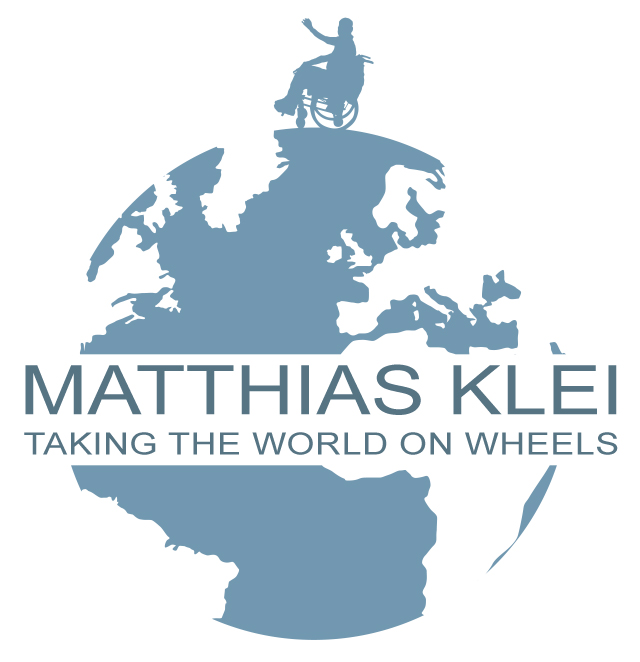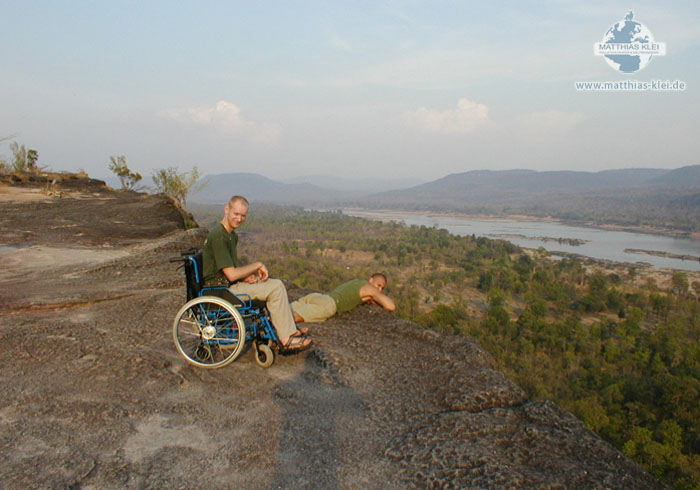Documentary about a trip in a wheelchair “to the other end of the world”
“Through New Zealand in a wheelchair”
-Concept-
My name is Matthias Klei. I was born in 1970 with a physical disability and currently work in Bielefeld as an office clerk for an association that provides outpatient care and social services. However, I prefer to spend my free time traveling. It has to be “individual.” I've never been interested in a “simple” package vacation. As a child, despite or perhaps because of my disability, I spent a lot of time with the Scouts, where camping was a regular activity. I don't need a lot of luxury on my vacations. I have already seen the east and west coasts of the US, Thailand, Laos, Cambodia, Bali, the Philippines, and the major cities of Europe. But my next destination is a little further afield: New Zealand.
I always travel with excess baggage: due to a birth defect, I have spastic tetraparesis—all four limbs are spastically paralyzed and my neck and trunk muscles are also impaired. My disability severely limits my mobility and I am confined to a wheelchair. I need help washing, dressing, and eating. I am considered severely disabled and also require support when abroad. My speech disorder (dysarthria) presents an additional challenge.
According to German law, I am considered severely disabled and live in a wheelchair with 100% disability!
Nevertheless, or perhaps because of this, I would like to embark on a four-week adventure trip to Aoteaora and invite you to accompany me and my assistants to the land of the big white cloud. New Zealand in particular stands for active, physical fitness vacations. People who come home tell of beautiful hikes, whitewater rafting, kayak tours, and bungee jumping. But what is it like for someone who is confined to a wheelchair to travel through the country on the other side of the world for four weeks in a motorhome and tent?
With my film, I want to give viewers a very personal insight into the everyday travel life of a person with a disability, highlight the obstacles, but above all document that with a little courage and determination, such a trip is possible. I hope to promote greater acceptance of people with disabilities and prevent them from being relegated to their “disabled world” – normalization, not tolerance, is the keyword here. I also want this film to encourage other people with disabilities not to let themselves be pushed into a corner of society, but to believe in themselves, to pursue their own dreams, and to overcome their limitations! And last but not least: to participate actively in life.
The trip is scheduled to start in October 2026. A 24-hour flight will take us to New Zealand, where we will travel 12,000 kilometers around the North and South Islands. Hiking, sea kayaking, rafting, abseiling, surfing, and fishing are all on the adventure agenda. In between, famous tourist attractions such as the hot springs of Rotorua, the volcanic island of White Island, whale watching off Kaikoura, and swimming with dolphins in Northland invite you to linger. In the evenings, tired bones can be relaxed on a deserted beach with a blazing campfire: pure wildlife romance.
But the film isn't just about the beautiful aspects of such a trip; it also highlights the difficulties: when the hiking trail turns out to be too steep and rocky and I may have to give up. Or when cold river water replaces a warm bath for my morning wash. My team and I will certainly reach our physical and mental limits, but we want to take this trip to explore them. After all, my motto in life is: There are no problems – there are only solutions!
There is also a political and social interest behind my project. With this film, I want to demonstrate that people with disabilities should be shown more acceptance and that they do not belong in a “disabled world.” With the right support, people with disabilities can achieve just as much as anyone else! Normalization, not tolerance, is the keyword here. The word “inclusion” is currently on everyone's lips, yet few people can take the mental leap to accept people with disabilities in their circle and not just integrate them benevolently.
I would like to invite you to join me on this special journey. Come along and share with me the experiences that such an undertaking brings to a person with a disability!



